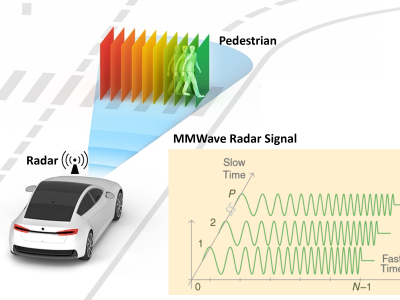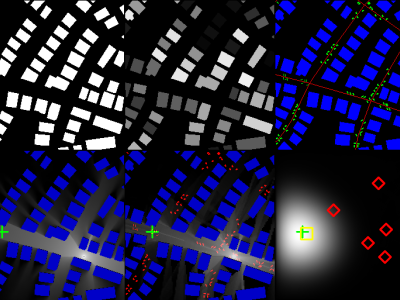CRAWDAD jiit/accelerometer

- Citation Author(s):
-
Mohit JainAjeet Pal SinghSoshant BaliSanjit Kaul
- Submitted by:
- CRAWDAD Team
- Last updated:
- DOI:
- 10.15783/C76K58
 392 views
392 views
- Categories:
Abstract
Accelerometer samples collected through Android phones when driven on different vehicles.
This dataset consists of accelerometer samples collected through Android phones when driven on different vehicles. The dataset consists of 678 Km of drive data, which involved 22 different drivers, 5 different types of vehicles (bus, auto rickshaw, cycle rickshaw, motorcycle, and car) and 4 smartphones.
date/time of measurement start: 2012-03-12
date/time of measurement end: 2013-03-23
collection environment: The dataset consists of accelerometer values collected through Android phones when driven on different vehicles. These values were used to detect and differentiate speed breakers from other road anomalies. But that is not only benefit from collected dataset, because behavior of different vehicles on paved roads and various road anomalies can also be examined through it.
network cofiguration: We developed an Android based application that collected accelerometer samples and logged them to a csv file. The application's user interface has two buttons labeled "type 1 speed breaker" and "type 2 speed breaker", which were used to mark time instance in csv file, when type 1 speed breaker and type 2 speed breaker were encountered. (Type 1 speed-breakers usually have a travel length of 3 to 6 feet and are 5 to 10 inches high, whereas Type 2 speed-breakers are 3 to 6 inches high with a length of 1 ft to 2 ft.) In a few initial tests, the application was recording speed breakers and potholes instead of two types of speed breakers.
data collection methodology: We collected evaluation data using several different types of vehicles driven by different people on various roads in New Delhi, India. At least two phones were used in every drive, one for collecting accelerometer data, and the other for recording user input (marker). The measurer file was logged through Android phones kept at different locations in the vehicle and was void of human intervention. The marker was time-synchronized with measurer to corroborate speed breaker detection.
limitation: Accelerometer values of marker file should not be taken into consideration because they also account for hand movements along with acceleration acting along the vehicle.
Traceset
jiit/accelerometer/speed-breaker
Accelerometer Samples collected through Android phones when driven on different vehicles
- files: accelerometer-1.tar.gz, accelerometer-2.tar.gz, accelerometer-3.tar.gz, accelerometer-4.tar.gz
- measurement purpose: Localization
- methodology: At least two phones were used in every drive, one for collecting accelerometer data, and the other for recording user input (marker). Whenever possible, one measurer was placed in front of the driver, e.g. on the dashboard (in case of a car) or in the front basket (in case of the cycle rickshaw). The measurer file was logged through Android phones kept at different locations in the vehicle and was void of human intervention. The marker was time-synchronized with measurer to corroborate speed breaker detection.
jiit/accelerometer/speed-breaker Trace
- android: Accelerometer Samples collected through Android phones when driven on different vehicles
- configuration: At least two phones were used in every drive, one for collecting accelerometer data, and the other for recording user input (marker). Whenever possible, one measurer was placed in front of the driver, e.g. on the dashboard (in case of a car) or in the front basket (in case of the cycle rickshaw).
- format: There are 40 traces; these are divided into 4 archives, 10 traces each. Each trace consists of marker file (Marker.csv) and set of measurer files (Measurer[i].csv). Marker was used to measure the ground truth, i.e time instance of occurrence of speed breaker were marked in marker file. The format of csv files changed numerous times during the experiment. For instance, initially application was designed to mark speed breakers (irrespective of their types) and potholes, and as a result traces 1, 2, 3, 4, and 39 have headers "Speedbreaker" and "Pothole". Then, as project proceeded, application design was changed, pothole markings were dropped, and speed breakers of different types were marked separately under headers "Event 1" and "Event 2". Then after some time application was modified to save GPS coordinates also; traces 19-38 and 40 contain gps data. In each of these traces, not more than one file will contain valid gps data (with the other records being "unable to access data"), because in other phones gps was disabled to save battery. Starting from trace 5 (and excluding trace 39), the application was recording "time,x-axis,y-axis, z-axis, Event 1, Event 2" as headers of csv files, in some of the cases followed by "gpsdata" field. Both marker and measurer files had "Event 1" and "Event 2" fields, corresponding to two types of speedbreakers. But actual recording of these events was done only in the marker files, i.e value 1 is stored under "Event 1" and "Event 2" only in marker files. In measurer files all the values under headers "Event 1" and "Event 2" are 0. Therefore, fields "Event 1" and "Event 2" bear no information in measurer files. In marker files, however, the value 1 for "Event 1" or "Event 2" means that speed breaker type 1 or speed breaker type 2 respectively was encountered at that time.
Instructions:
The files in this directory are a CRAWDAD dataset hosted by IEEE DataPort.
About CRAWDAD: the Community Resource for Archiving Wireless Data At Dartmouth is a data resource for the research community interested in wireless networks and mobile computing.
CRAWDAD was founded at Dartmouth College in 2004, led by Tristan Henderson, David Kotz, and Chris McDonald. CRAWDAD datasets are hosted by IEEE DataPort as of November 2022.
Note: Please use the Data in an ethical and responsible way with the aim of doing no harm to any person or entity for the benefit of society at large. Please respect the privacy of any human subjects whose wireless-network activity is captured by the Data and comply with all applicable laws, including without limitation such applicable laws pertaining to the protection of personal information, security of data, and data breaches. Please do not apply, adapt or develop algorithms for the extraction of the true identity of users and other information of a personal nature, which might constitute personally identifiable information or protected health information under any such applicable laws. Do not publish or otherwise disclose to any other person or entity any information that constitutes personally identifiable information or protected health information under any such applicable laws derived from the Data through manual or automated techniques.
Please acknowledge the source of the Data in any publications or presentations reporting use of this Data.
Citation:
Mohit Jain, Ajeet Pal Singh, Soshant Bali, Sanjit Kaul, jiit/accelerometer, https://doi.org/10.15783/C76K58 , Date: 20121103
















